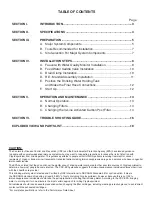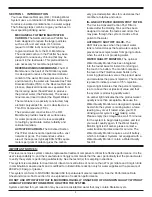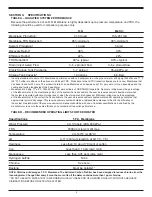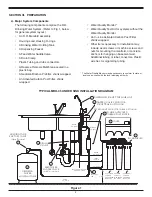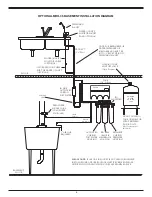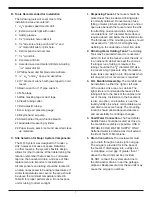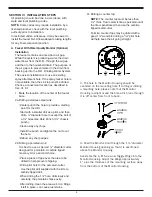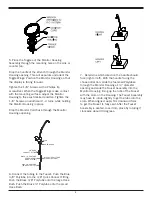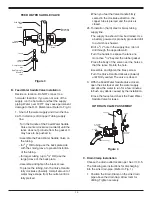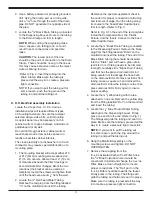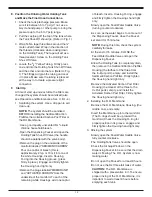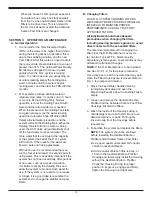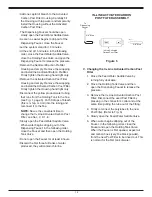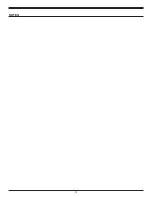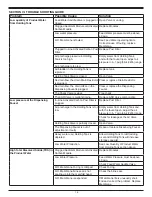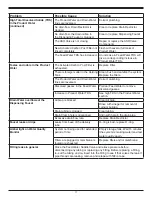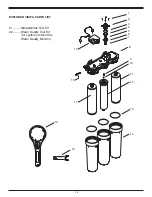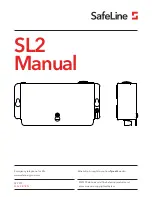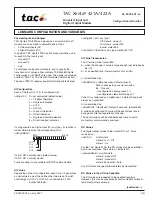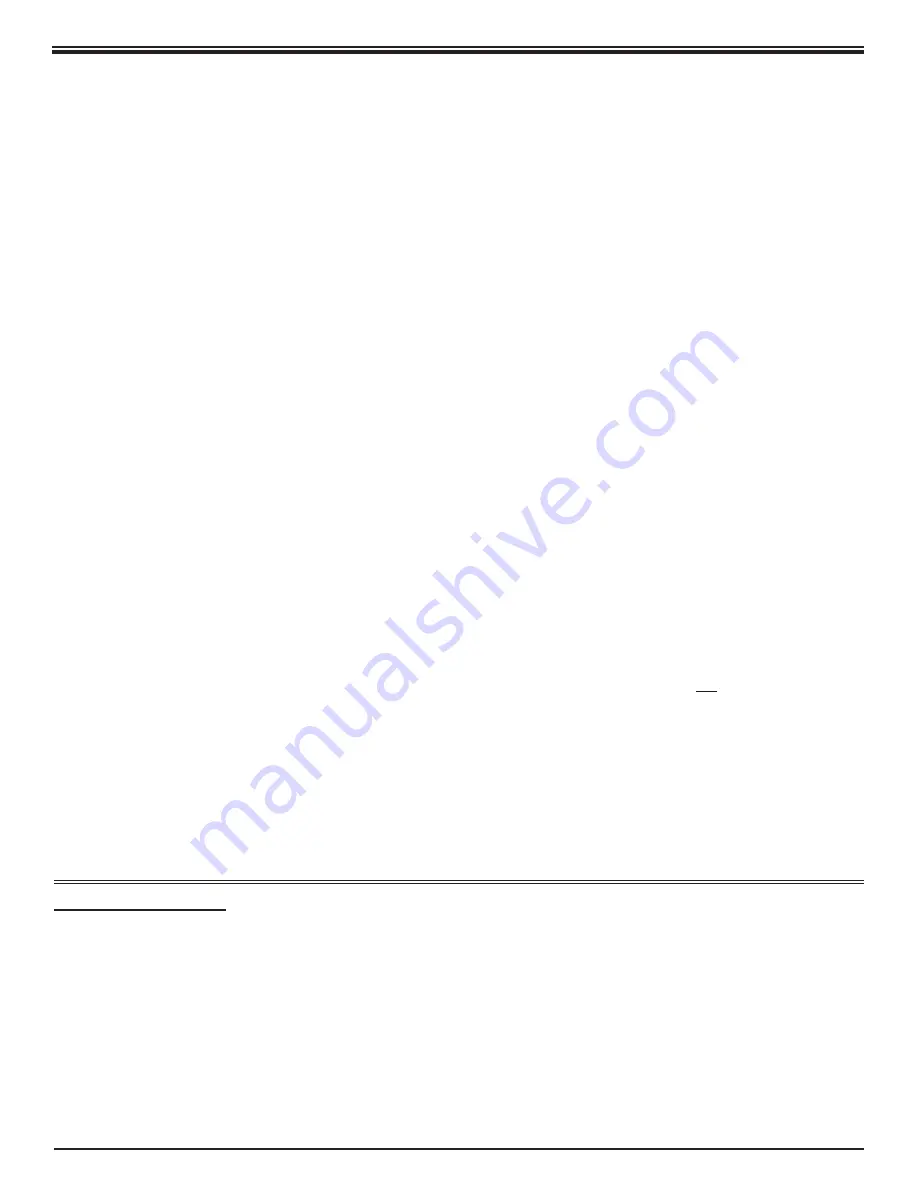
3
SECTION I. INTRODUCTION
Your new Reverse Osmosis (R.O.) Drinking Water
System uses a combination of filtration technologies
to reduce unwanted contaminants in a water supply.
The following steps combine to give you the best in
clear sparkling drinking water:
MECHANICAL FILTRATION/ACTIVATED
CARBON
–The Sediment/Carbon Prefilter has
been designed to reduce the larger particles
such as silt, rust and scale. Its 5 micron
(equal to 0.0002 inch) nominal rating helps
to give maximum life to the R.O. Membrane.
The activated carbon in the Prefilter has been
designed to reduce any chlorine that may be
present in the feed water. This pretreatment is
also necessary for membrane protection.
REVERSE OSMOSIS MEMBRANE
–The R.O.
Membrane is the heart of the filtration system.
It is designed to reduce the dissolved mineral
content of the water. Minerals picked up in the
environment by the water are measured as Total
Dissolved Solids (TDS). In the Reverse Osmosis
process, dissolved minerals are separated from
the incoming water (Feed Water) to produce
the product water (the Permeate). The excess
minerals are rinsed to drain (the Reject Water).
The membrane is a specially constructed, fully
aromatic polyamide film, and is classified as a
Thin Film Composite (T.F.C.).
The spiral wound construction of the R.O.
Membrane provides maximum surface area
for water production and is less susceptible
to fouling by particulate matter, turbidity and
colloidal materials.
ACTIVATED CARBON
–The Activated Carbon
Post Filter contains carbon particles with a vast
network of pores. The tremendous surface
area of these pores (typically 800–1200 square
meters per gram of carbon) gives the carbon
very good adsorptive sites for substances that
contribute to tastes and odors.
IN–LINE ACTIVATED CARBON POST FILTER
–
The In–Line Activated Carbon Post Filter is
located after the Holding Tank and has been
designed to reduce the tastes and odors that
may pass through the system. It adds a final
polish to the water.
AUTOMATIC SHUTOFF VALVE
–The
ASO Valve senses when the product water
tank is full and closes the feed water supply to
prevent excess reject water from going to drain
when the unit is not producing water.
WATER QUALITY MONITOR
–The optional
Water Quality Monitor has been integrated
into the faucet base for instant monitoring at
the touch of a button. The monitor compares
the level of the Total Dissolved Solids in the
incoming (feed) water versus the product water
and calculates the percent rejection. The monitor
is preset to indicate a level of 75% rejection.
A green light indicates that the percent rejection
is at or above the set (desired) value and that
the system is producing quality water.
An amber light indicates that the product water
quality is less than acceptable. Because the
Water Quality Monitor was designed to operate
best while the system is making water, a false
reading may occur if tested when your R.O.
drinking water system is not making water.
Please empty the storage tank, wait 15 minutes
for the system to begin making water, and test
your water quality again. If the Water Quality
Monitor light is still amber, please contact a
water treatment professional for service. The
Water Quality Monitor requires a 9 volt battery,
which is included. Systems not equipped with a
Water Quality Monitor contain a Water Quality
Test Kit.
IMPORTANT NOTICES:
This reverse osmosis system contains replaceable treatment components critical for effective performance. It is the
user's responsibility to, and the manufacturer strongly recommends that the user, periodically test the product water
to verify the system is performing satisfactorily. See the test kit(s) for sampling instructions.
This system is acceptable for treatment of influent concentrations of no more than 27 mg/L nitrate and 3 mg/L nitrite
in combination measured as N and is certified for nitrate/nitrite reduction only for water supplies with a pressure of
280 kPa (40 psig) or greater.
This system conforms to NSF/ANSI Standard 58 for pentavalent arsenic reduction. See the Performance Data
Sheet and Arsenic Facts section for an explanation of reduction performance.
DO NOT USE WITH WATER THAT IS MICROBIOLOGICALLY UNSAFE OR OF UNkNOWN QUALITY, WITHOUT
ADEQUATE DISINFECTION BEFORE OR AFTER THE SYSTEM.
Systems certified for cyst reduction may be used on disinfected water that may contain filterable cysts.
Summary of Contents for MRO-35
Page 15: ...15 NOTES ...


